The train that defies gravity
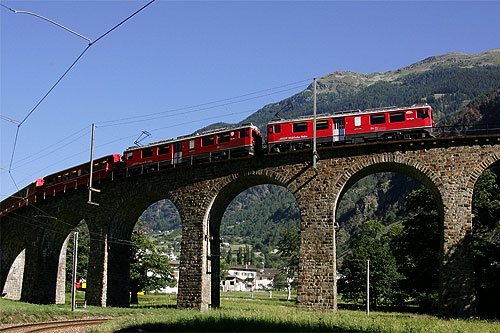
Set high in the mountains, the Albula/Bernina railway - a Unesco World Heritage Site - is not just an important link between Switzerland and Italy.
The famous Rhaetian Railway red train also takes you on a historic journey to the natural beauties of the eastern canton of Graubünden.
Passengers leaving Tirano get the message almost immediately: the Bernina Express is a train with a difference.
The moment it pulls out of the station of this little Italian town, the train mingles with the traffic and crosses the Piazza del Santuario della Madonna, competing with pedestrians, bicycles and women with shopping bags.
Not so much a conventional train, announces the recorded commentary, more a tram connecting the villages along the valley.
“Sometimes there are accidents involving road vehicles. Nothing serious, apart from the odd delay,” said the train’s driver Marco Costa.
History and landscape
From Tirano, 429 metres above sea level, the red train climbs the Val Poschiavo valley, skirts lakes and glaciers, crosses two mountain massifs (the Bernina and the Albula), and calls at many tourist resorts before reaching the Swiss town of Thusis. The train then travels on to Chur, the capital of Graubünden and the oldest town in Switzerland.
With its 196 bridges and viaducts, 55 tunnels and 128 km of track, the railway is a miracle of technology – an achievement that, even a hundred years after it was built, continues to fascinate.
Designed by specialist engineers, the line is an efficient and beautiful combination of high-altitude railway technology and Alpine landscape. The view from the panoramic coach is breathtaking and the route rich in historical associations.
“That’s an old look-out tower used for spotting avalanches,” said Costa, pointing to a conical stone construction beside the track, with two viewing slits angled towards the mountain. “I don’t think there are many left in Switzerland.”
“The bridges and viaducts have remained unchanged. Until a few years ago, the high voltage cables were still carried on the old wooden poles.”
Living a dream
The choice of route, particularly in the case of the Bernina section, was dictated by a desire to promote the tourist attractions of the region, while reducing the environmental impact as much as possible. And most of the 700,000 people who use the railway in both directions are still tourists.
“I thought I was living a dream,” said Joree from Bangkok who was holidaying in Switzerland and Italy. “The mountains, the snowy peaks, the glaciers… an extraordinary experience. I would do it again.”
In connecting Tirano to Thusis, the Rhaetian Railway crosses very different climatic zones, landscapes, and cultural and linguistic areas. The Bernina Hospice, for example, marks the linguistic boundary between Italian (to the south) and the German and Romansh of the Engadine. This is why the surrounding landscape forms part of the Unesco World Heritage site, which was listed in July 2008, as well as the railway line itself.
The Landwasser viaduct (Albula section) and the Brusio circle viaduct (Bernina section), which enable the train to negotiate a large drop in altitude in a very short distance, are world famous.
Maximum gradient
Completed in 1903 (Albula section) and 1910 (Bernina section), Rhaetian Railway is quite unique.
As the company’s website makes clear: “It is the highest altitude transalpine railway in Europe and one of the steepest adhesion railways in the world”.
Riding the narrow-gauge tracks, the red train climbs without conventional rack-and-pinion assistance to the 2,253-metre-high Bernina Pass. “The gradient is seven per cent in places: the steepest a train can cope with under normal traction,” explained Costa.
Another oddity – he added, as the train entered a dark, narrow tunnel – is the power supply: as this is one of the few trains that works on direct current.
Every day anew
If the locomotive refuses to go on – breakdowns are not uncommon, confided Costa – the staff at the Poschiavo workshops are always on hand.
“Since the railway has been a World Heritage Site, down times have been shorter. In summer there are many tourists and problems must be dealt with quickly,” said Davide Menghini, responsible for locomotive maintenance.
“For us, the Unesco label is a kind of guarantee: I don’t think anyone will dare touch the workshops, which have become a skill centre for the maintenance of the Bernina Express.”
With or without Unesco, Costa’s job has not changed – and he has been an engine driver for 20 years.
A boring occupation? “Not at all. In just a few minutes, you pass from spring meadows to wintery mountain passes. Every day I discover something new. And the landscape at sunset is… awesome.”
Luigi Jorio in Poschiavo, swissinfo.ch
Rhaetian Railway in the Albula / Bernina Landscapes, brings together two historic railway lines that cross the Swiss Alps through two passes.
Opened in 1904, the Albula line in the north western part of the property is 67 km long. It features an impressive set of structures including 42 tunnels and covered galleries and 144 viaducts and bridges.
The 61 km Bernina pass line features 13 tunnels and galleries and 52 viaducts and bridges.
The property is exemplary of the use of the railway to overcome the isolation of settlements in the Central Alps early in the 20th century, with a major and lasting socio-economic impact on life in the mountains. It constitutes an outstanding technical, architectural and environmental ensemble and embodies architectural and civil engineering achievements, in harmony with the landscapes through which they pass.
Source: Unesco

In compliance with the JTI standards
More: SWI swissinfo.ch certified by the Journalism Trust Initiative

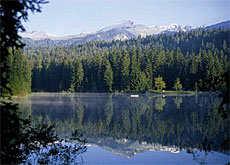
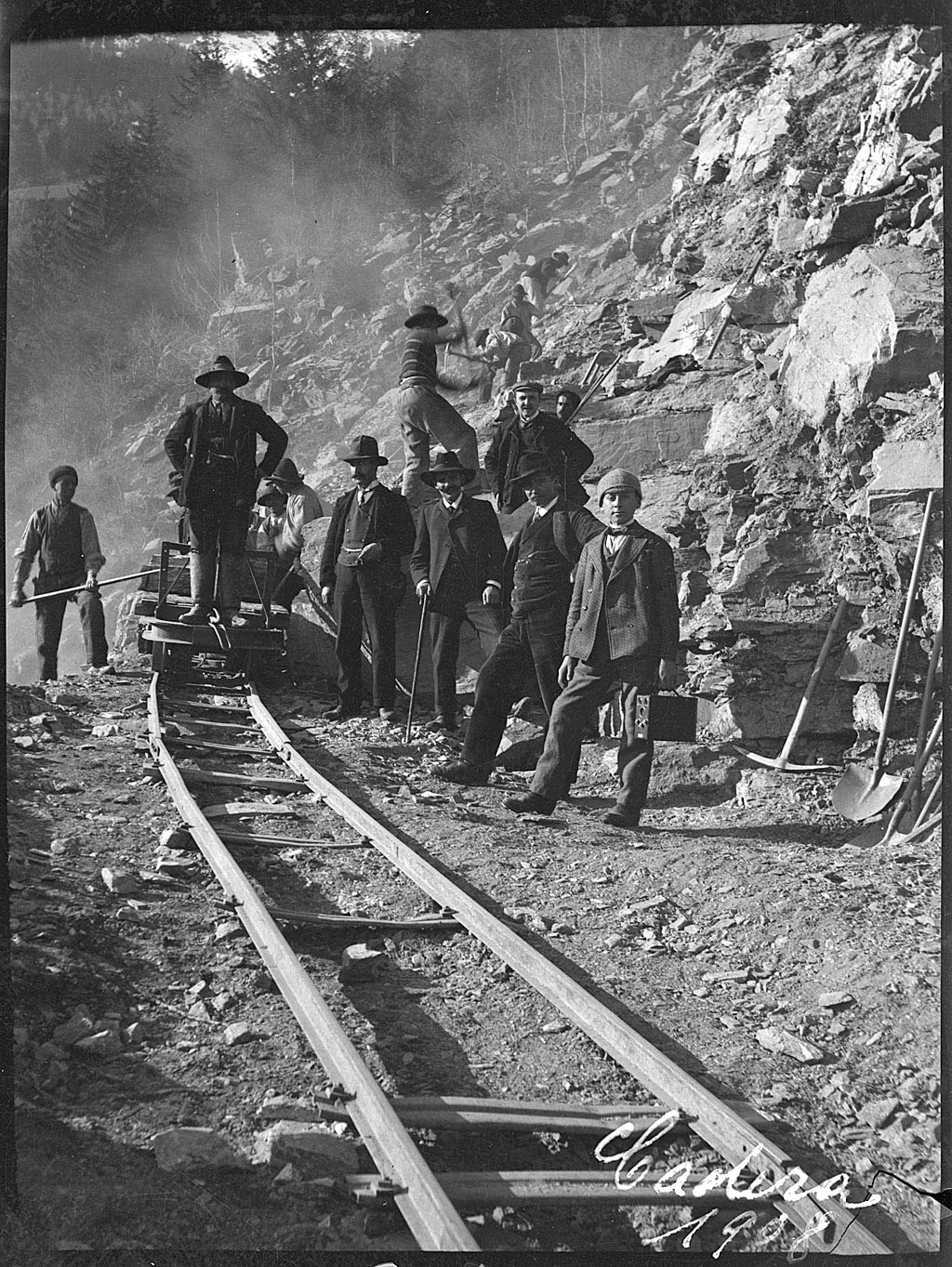
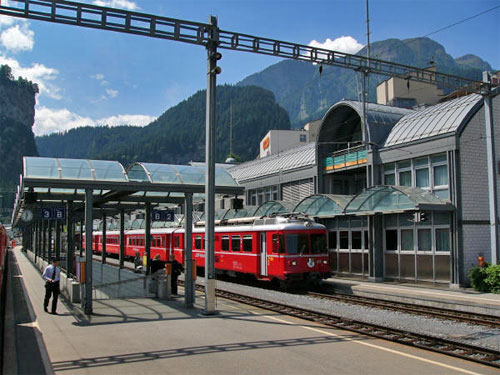
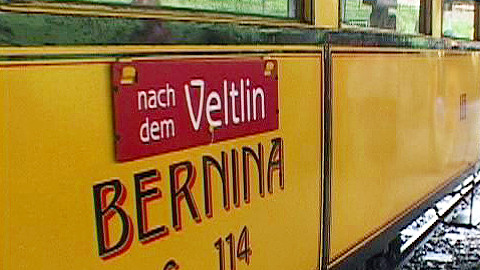
You can find an overview of ongoing debates with our journalists here. Please join us!
If you want to start a conversation about a topic raised in this article or want to report factual errors, email us at english@swissinfo.ch.